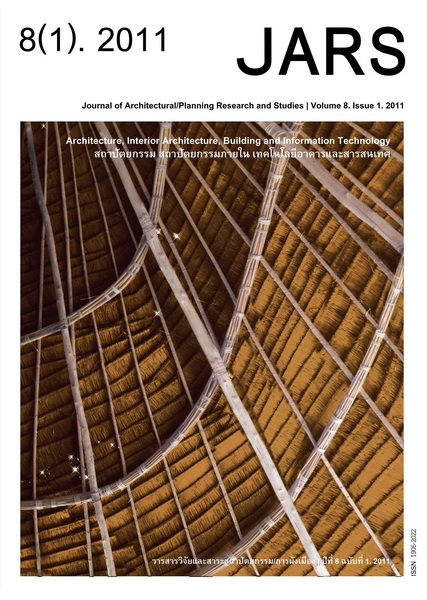Architecture for Wheelchair Users
Main Article Content
Abstract
This article presents a study of the accessibility, mobility and usability of spaces for wheelchair users
who do not move by their feet but transformed into “wheels”. Given the importance of architecture for human
activity, this raises some questions: how would human users manage when the space accessibility was
changed, and what kind of architecture responds to wheelchair users? The study summarizes some
suggestions which should be considered in mobility design for wheelchair users concerning turning space for
access and the specific location of functions to promote convenient circulation.
Downloads
Article Details

This work is licensed under a Creative Commons Attribution-NonCommercial-NoDerivatives 4.0 International License.
All material is licensed under the terms of the Creative Commons Attribution 4.0 International (CC-BY-NC-ND 4.0) License, unless otherwise stated. As such, authors are free to share, copy, and redistribute the material in any medium or format. The authors must give appropriate credit, provide a link to the license, and indicate if changes were made. The authors may do so in any reasonable manner, but not in any way that suggests the licensor endorses you or your use. The authors may not use the material for commercial purposes. If the authors remix, transform, or build upon the material, they may not distribute the modified material, unless permission is obtained from JARS. Final, accepted versions of the paper may be posted on third party repositories, provided appropriate acknowledgement to the original source is clearly noted.
References
La-lai, K. (2007). มันเป็นกรรมของมนุษย์ล้อ [Disability of surroundings]. Retrieved March 4, 2010, from http://www.oknation.net
Ministry of Interior. (2005). กำหนดสิ่งอำนวยควkมสะดวกสำหรับผู้พิการและคนชรา [Disability people’s facilities]. Retrieved March 4, 2010, from http://www.asa.or.th/?q=node/286
Phetrakat, P. (1996). สู่โลกกว้างบนหนทางผู้พิการ [Outdoor life in spite of disabilities]. Bangkok,Thailand: Foundation for children with disability.
Story, M. F., Mueller, J. L., & Mace, R. L. (1998). The universal design file: Design for people all ages and abilities. Raleigh, NC: North Carolina State University.
The Institute of Health Promotion for People with Disability. (2009). รถนั่งคนพิการ [Wheelchair]. Journal of Public Health (Mohanamai), 19(2), (September–October), 37-39.
Wiktionary. (2005). คนพิการ [People with disabilities]. Retrieved November 8, 2010, from http://th.wiktionary.org


